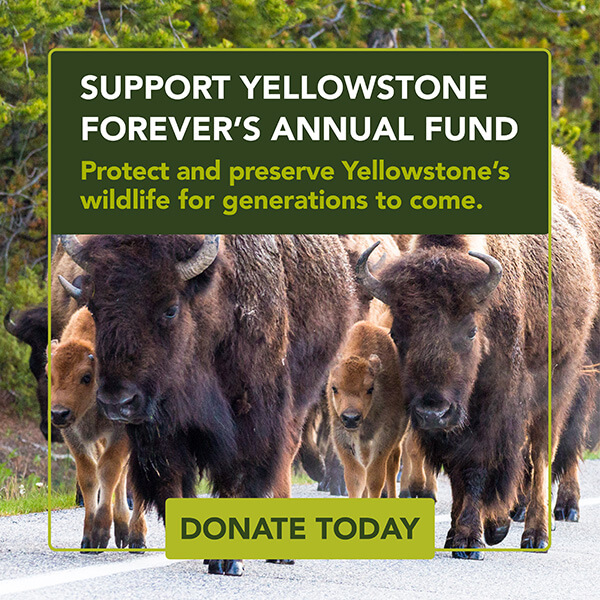by Virginia Miller
Yellowstone is a land of microbes, megafauna, and devastating geologic events. From glaciers and earthquakes to the Yellowstone Volcano, everything here can be traced back to geologic roots, including the petrified trees standing high above the northern range.

Fifty million years ago, the Absaroka volcanoes that follow the park’s eastern and northern boundaries were active separately from the Yellowstone hot spot. Their heat melted snow on the peaks, and sent the resulting mudslide rushing downslope in a lahar: a jumble of slush, debris, ash, and volcanic rock. These lahars covered the landscape of the northern range of Yellowstone, including the plants and trees that were living at the time.
Trees that live in the park today, such as spruce, fir, and alder, were buried along with trees that are ill-suited to a modern Yellowstone climate, such as redwood, magnolia, and maple. Stumps, leaves, and even pollen and soil were also covered and petrified in this process, resulting in a stunning record of life in Yellowstone during this Eocene period.
 The petrification process here is unique because it has preserved the organic matter and actual cells of the wood within the minerals. In other famous fossil forests, such as in Arizona, the minerals actually replaced the cells. Here, trees were covered by debris, and then groundwater rich in silica and calcite from volcanic ash seeped in to clog the hollow tubes that trees use to transport water.
The petrification process here is unique because it has preserved the organic matter and actual cells of the wood within the minerals. In other famous fossil forests, such as in Arizona, the minerals actually replaced the cells. Here, trees were covered by debris, and then groundwater rich in silica and calcite from volcanic ash seeped in to clog the hollow tubes that trees use to transport water.
While the geologic explanation is fascinating, mountain man Jim Bridger’s reasoning speaks to my love of tall tales. His description of Yellowstone’s fossil forests didn’t stop at the trees. He describes the “peetrified (sic) trees a’growing with peetrified birds a’singing peetrified songs.”
So next time you’re in Yellowstone, channel your inner Bridger and look for the “sun and the moon shin(ing) with peetrified light.
*Remember, it is illegal to remove any features from the park, including petrified wood.
This article was originally published in the Summer 2019 issue of Yellowstone Quarterly.





Comments are closed.